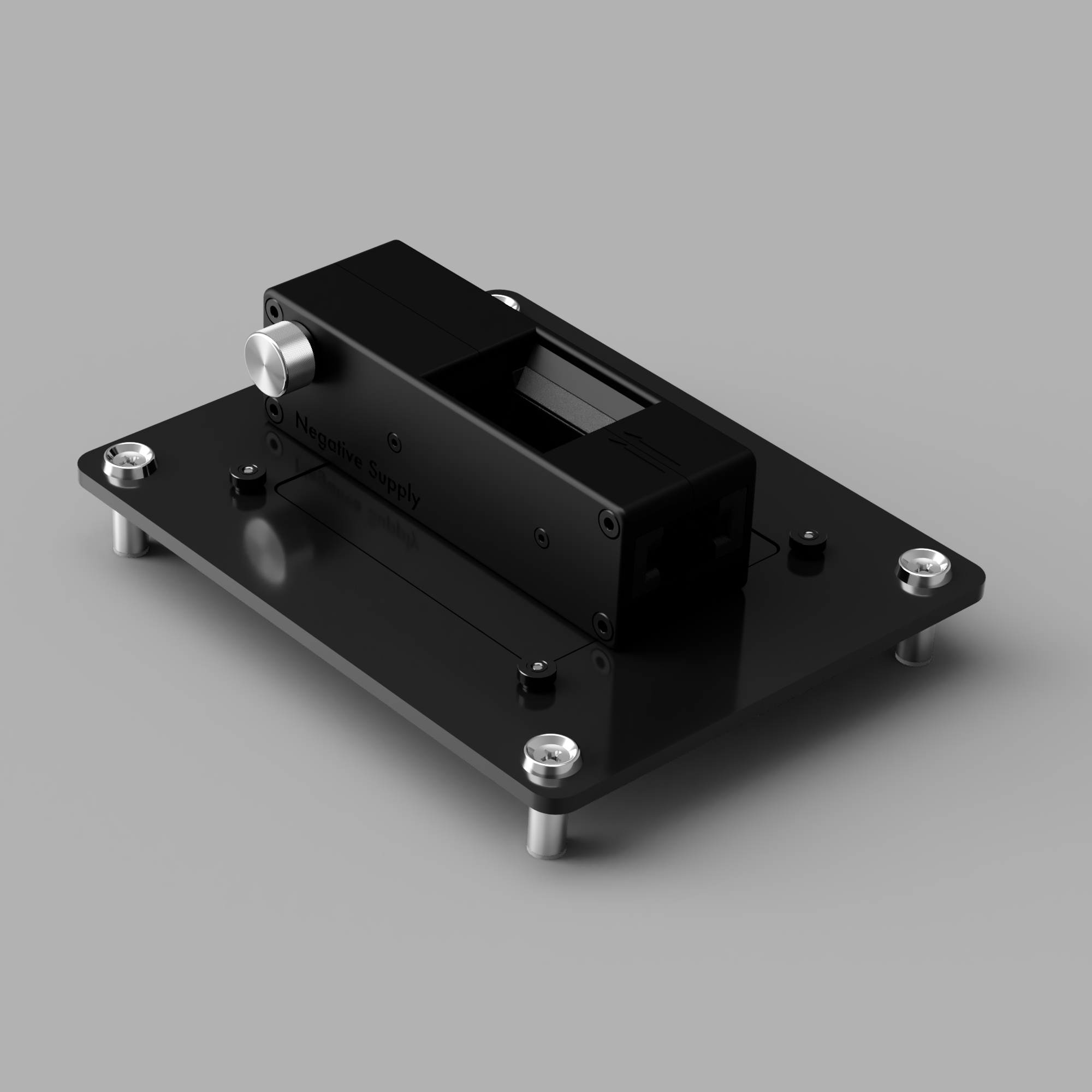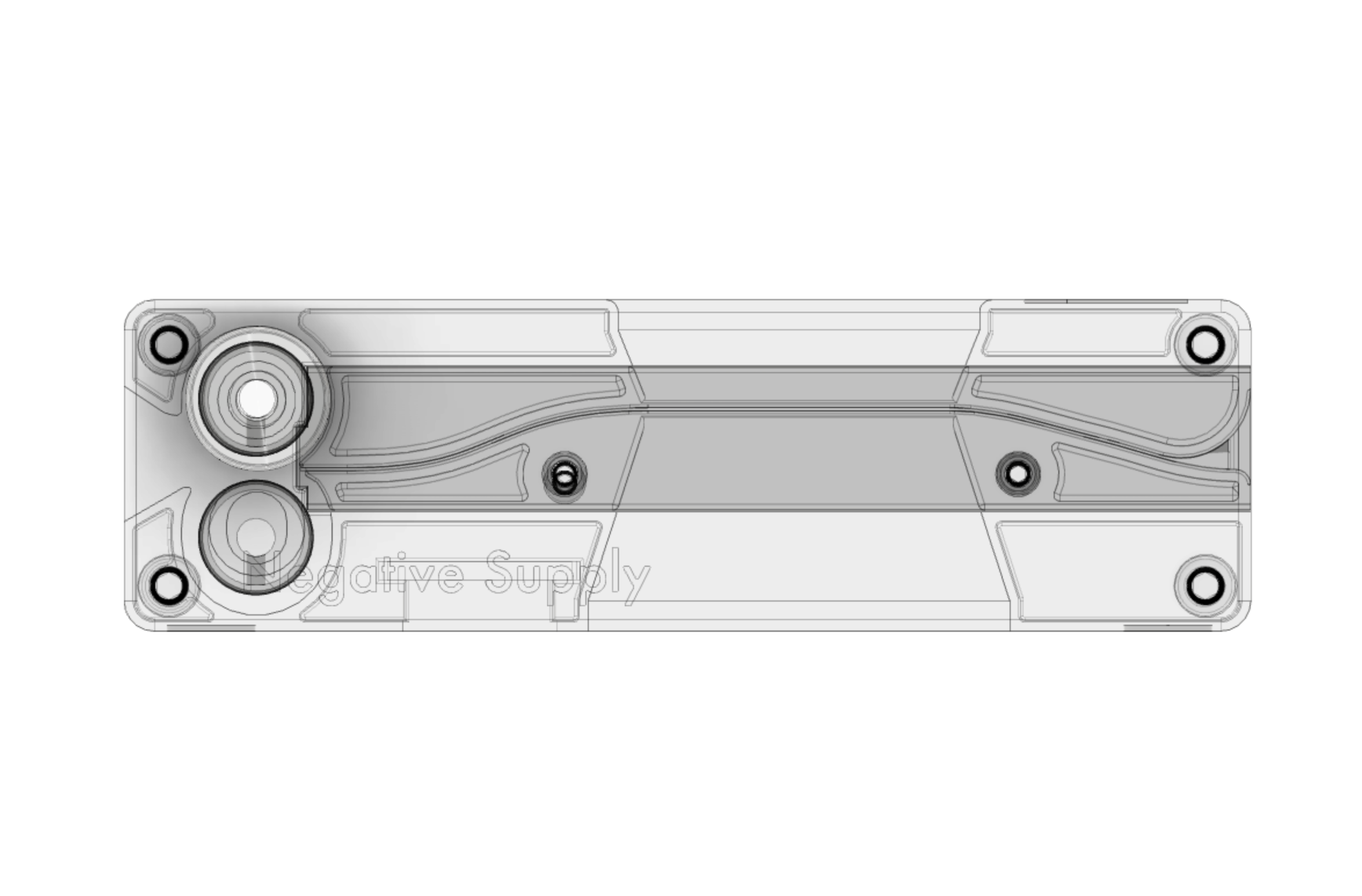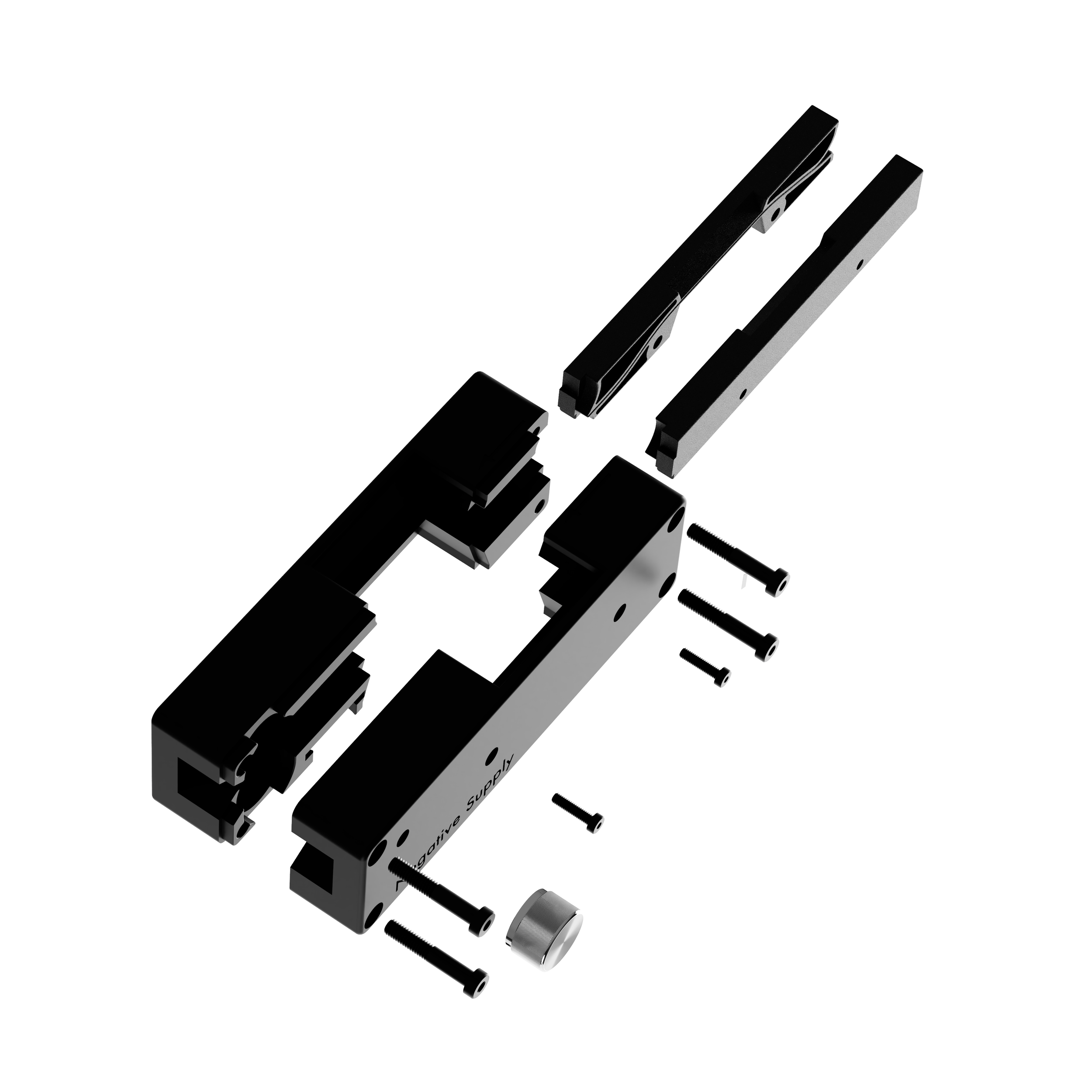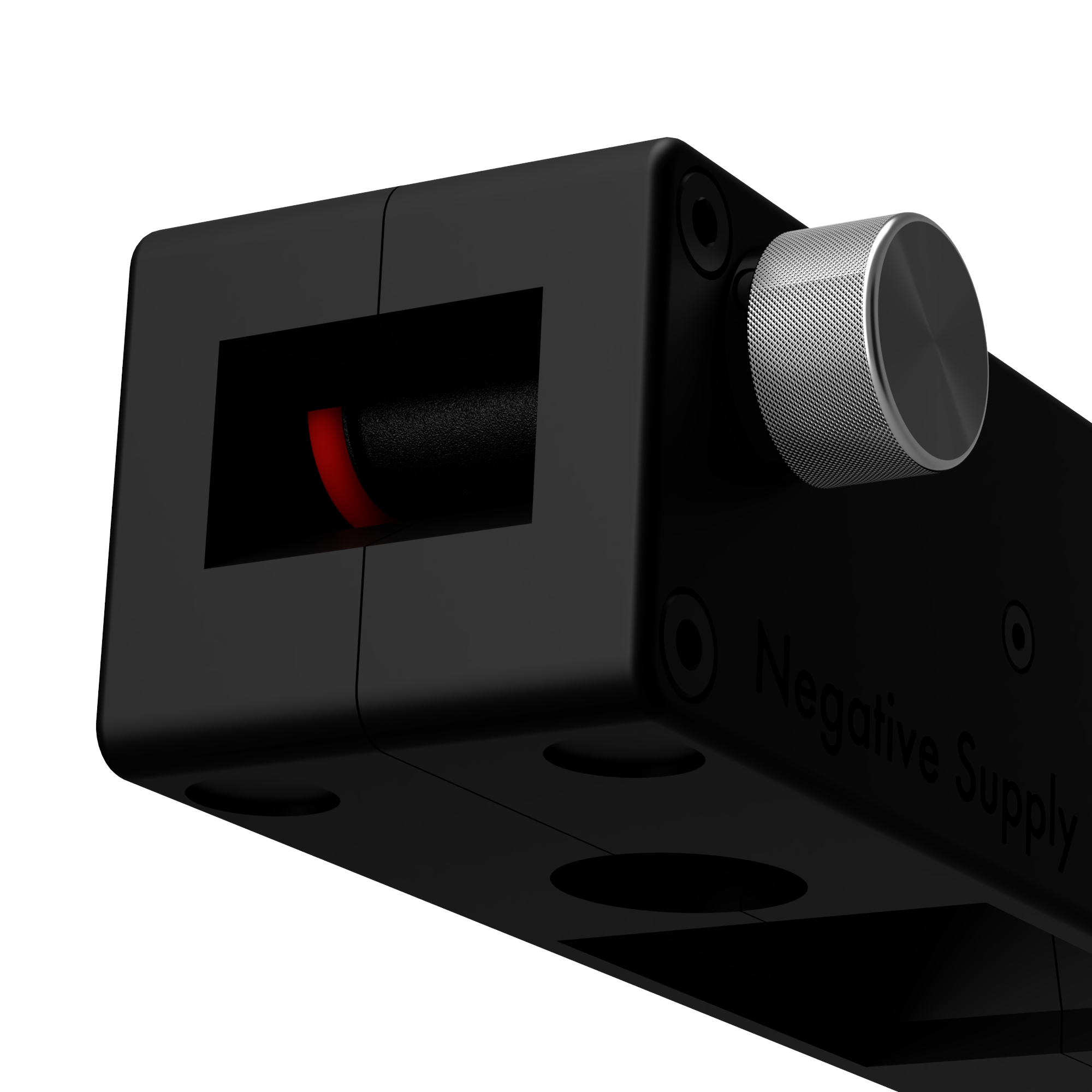Behind the Design: Q&A with Negative Supply Co-Founder, Saxon McClamma
Designing a device like the Film Carrier MK1 doesn’t happen overnight, and for Negative Supply Co-Founder, Saxon McClamma, the MK1 is the result of a years-long passion both for design and photography. Read on for a glimpse into Saxon’s design background, his influences and inspirations, additional insights on the Film Carrier MK1 and the future of Negative Supply.
Pictured: Saxon McClamma making photographs. Captured on Mamiya RZ67 and scanned on our 120 beta scanner.
When did you begin designing, or when did you become interested in the process of designing a product or concept?
Saxon: “While I’ve always been one to build and take things apart, the first big project I remember was building a boat after high school. I was fascinated with the simplicity of stitch and glue construction, and figured I could have it together within a week. It ended up taking me 2 weeks, but the process was incredibly rewarding. At the time I loved that I could build something to suit my needs (I needed a small, agile boat to go up and down rivers), and being hands on was what I needed after leaving high school where I took welding classes each year.”
Is product design (or similar) in your family history?
Saxon: “In some ways, yes. My dad has always built furniture and worked with his hands, and my grandfather on my mom’s side was a civil engineer for the Florida DOT, and my grandparents on my dad’s side participated in craft fairs.”
Film Carrier MK1 with Pro Mount MK1, rendering by Saxon McClamma, 2019.
Do you have an academic background in design?
Saxon: “Yes and no, my background is in materials science and engineering. I was fortunate to be in a program at The University of Alabama at Birmingham that was led by amazingly talented professors. They encouraged creativity, and helped us see what was possible using materials and techniques. While some of the techniques we use on the MK1 weren’t even around when I was in school, I’ve been exposed to them through other ventures. Currently I am working towards a graduate degree in Sustainable Design, a central pillar in our company.”
Do you have specific design influences or inspirations, or styles that inspire or inform your work?
Saxon: “I’m influenced by many things, with simplicity and ease of use always being central to everything I do. Each time I design something, I go back dozens of times and ask myself “how could this be simpler or easier” - this process helps me work through issues iteratively, with end results better than I could have imagined. I think you see this in many cameras, including the Olympus OM series, the Nikon FM, and of course Leica.”
Above: Renderings of Film Carrier MK1 by Saxon McClamma, resulting from numerous iterative designs.
When designing the Film Carrier MK1, from a form point of view, what were your most important goals?
Saxon: “Industrial simplicity. I wanted the MK1 to function like a tool while being a beautiful piece of photographic equipment. I wanted it to sit out on desks and not look messy or distracting from the beautiful Leicas and Nikons I’ve grown to love.”
During design and testing of the Film Carrier MK1, from a functionality point of view, what changes did you make to improve your design/what shortcomings did you address?
Saxon: “The most important thing we worked towards during testing was film flatness and film stability, or the ability for the tracks to keep the film centered during capture. This ultimately leads to much faster and more consistent results, and we were able to ensure film flatness and stability through multiple design revisions, implemented from our beta testing feedback and results.”
Film Carrier MK1 partially disassembled, shown with customized hardware and in CNC machined construction.
“I believe Negative Supply represents innovation and an unwavering passion for film photography, and it was our goal to keep alive an industry we love. ”
Promotion for Film Carrier MK1 in CNC machined aluminum.
What significance goes along with switching the Film Carrier MK1 from multi jet fusion to CNC machined aluminum?
Saxon: “Looks and durability for one, but also functionality. Now we are able to have interchangeable inserts to show more or less of the film border, and these inserts can be shimmed to hold the film tighter for film stocks that happen to be slightly narrower. (More on this in the coming weeks).”
Moving forward, do you foresee similar, smaller design/manufacturing entities (such as Negative Supply) making up a significant portion of the film industry?
Saxon: “I do. I think a lot of people gave us flack for the price of our unit, but the fact is we did everything we could to keep the price as low as possible, and still run a sustainable business. Sure, we could have broken exactly even, but we wanted to have margins (slim as they were) that financed future products. I think you will see that our company and others out there have smaller markets than in the past, but the passionate base of supporters have been nothing but encouraging for what we represent. I believe Negative Supply represents innovation and an unwavering passion for film photography, and it was our goal to keep alive an industry we love. I am hopeful that our success encourages other inventors and designers to do the same, and I cant wait for what’s next.”
What is your current design work focused on?
Saxon: “Right now about all I can think about is logistics for the MK1 launch, but I’ve had time to begin work on the 120 unit and a 4x5 holder. We think the 4x5 product will really impress people, it’s going to align the negative precisely, but provide a user the ability to quickly move between frames.”
In the future, can you hint at what concepts you hope to design and complete, or what problems with film photography you wish to solve thru designing?
Saxon: “For us it’s hard to think about anything other than scanning, and I think that’s right where we belong at the moment. That being said, we haven’t forgotten labs, and are always looking for ways to automate processes that have typically been manual.”









